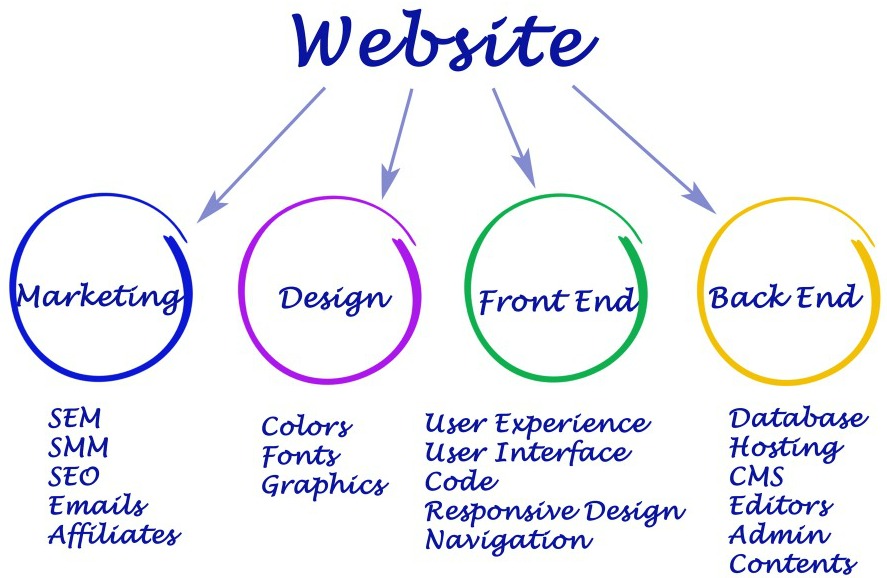
May 30, 2017
Are you wondering about how to open a driving school? Do you think you can turn it into a successful business?
From my personal experience, I can tell you that it can be done. Although many driving schools go out of business shortly after opening the doors, owning a driving school can be a lucrative business endeavor. That is, if you do your homework and due diligence beforehand.
Below is my step-by-step plan on how to open a driving school in your area.
The bad news is that you’ll spend a TON of time completing paperwork for the state before you open your doors. The good news is that you’ll have a continuous supply of potential students. Every 16- or 17-year-old can’t wait to get his or her driver’s license. Most will have to go through some kind of driver education program.
Every year, you’ll have a fresh, new group of potential students.
How to Open a Driving School:
Step #1 – Study State Regulations

Before moving forward with your plan to open a driving school, the very first step is to see if your state will even allow it. Most do, but some don’t. Some states will approve new driving schools, but not in major cities.
Thoroughly review your state regulations to make sure you can open a driving school in your desired market. Do your due diligence before spending ANY money. The old adage “Measure twice and cut once” works very well here. Schools that do not comply with state rules and regulations may be subject to stiff penalties and license suspension, or worse – revocation.
Once you’ve determined that your state does allow the opening of new driving schools, be prepared to submit a mountain of paperwork. Your school and all instructors must be state certified. Your vehicles must pass inspections. Plus, your records must be open and available to state inspectors.
In some states, the Department of Driver Services oversees all defensive driving, driver education, and third-party testing programs. Field operators audit program files, monitor instructors, investigate complaints and oversee training. In other states, the Department of Motor Vehicles will be the state agency responsible for overseeing driving schools.
How to Open a Driving School:
Step 2 – Analyze the Competition

Now that you’ve determined that your state will allow you to open a driving school, should you? Well, that all depends on the competitive environment. Will your area be able to support another driving school or is the market already flooded? Or will your driving school provide services not offered at other schools?
The only way to get these all-important answers is to perform a competitive marketing analysis of your area. According to marketing guru Vibhu Satpaul, the Internet will help you identify opportunities to serve newly acquired and prospective customers, determine the size of your market, discover your competitors’ secret success recipe, and find tried and tested ways to cater to the target market.
Spy on Your Competition
For example, you can see what keywords the competition is targeting with software like SEMRush, SuggestMrx, Ubersuggest or SEO Chat. You can also monitor their online reputation with some brilliant tools like OpenSiteExplorer. Be sure to check Yelp and Google Reviews to see if other driving schools are pleasing their customers. If not, there may be room for your driving school to move in and do better.
You can also do a Google search to see what and how many high schools are in your market. From my own experience, it’s good to have at least three local high schools in your backyard. This is where you’ll find the majority of your driving school customers. If you can build a great relationship with the high schools, you can build your customer base.
For more information about how to analyze the competition, check out this article on the JeffBullas.com website.
How to Open a Driving School:
Step #3 – Choose a Location

After you’ve determined that the state will allow a new driving school to open and the competition isn’t too tough, it’s time to look for a specific location. I highly recommend that you use a broker to help you find a space. Leasing terms can be very complicated and I’ve seen people sign their life away to secure a space.
Don’t be locked in to a 5- or 10-year lease! What happens if after one year, you decide that the driving school industry isn’t for you? A better option is to secure a flexible lease. Yes, you have to sign a personal guarantee in the beginning, but it’s worth it because you can burn that off in just a few years.
A good commercial real estate agent can help you find a flexible lease with a 1-year option. If your school is successful, then you can sign a 5-year lease.
When choosing a location, it’s also important to know your state regulations. Some state agencies require a minimum size for the classrooms. You’ll want to make sure that your space meets any and all size specifications.
You’ll also want to consider street visibility. Can your location and sign be seen by thousands of commuters on a busy road each day? If so, GREAT! Is it easily accessible? Is it close to high schools? Are popular retailers located in the same plaza? These are also important considerations before signing on the dotted line.
How to Open a Driving School:
Step 4 – Submit Your State Application

If you’ve cruised through steps 1-3, it’s time to begin the mountains of paperwork required to submit your application to the DDS or DMV. This is also when you need to get your business license. In addition to lengthy applications, many regulatory agencies will also require surety bonds, a fire code inspection of your facility, a copy of your business license, background checks, and much more.
The key to success is to start your application early and make sure that you cross every “T” and dot every “I”. Break the giant task into smaller steps and you should be able to make big strides quite quickly. Then, be prepared to play the waiting game. It can take 1-3 months or longer to have the DDS or DMV approve your application.
How to Open a Driving School: Step #5 – Purchase Vehicle(s) and Office Supplies

Once you have your business license, it’s time to go shopping. You will need at least one vehicle equipped with an extra brake on the passenger side, desks and chairs for your classroom, a phone system, chairs or a sofa for your lobby/waiting area, filing cabinets, and office supplies.
What make/model car(s) should you purchase for your driving school? It should be relatively affordable should anything unfortunate happen. An inexpensive car is also cheaper to insure. It should also offer good visibility, usable power (but not too much of it), small size for easy parallel parking, great handling, and a relatively pure driving experience.
For my own driving schools, I chose to make our entire fleet 100% eco-friendly. We used the Toyota Prius because it burns less fuel than gasoline-engine counterparts. I wrapped all of our vehicles in our signature bright lime green and white colors. We have this professionally done because our cars are easily recognizable and serve as moving billboards for our schools.
For all of our office supplies, I used Costco and Amazon due to their low prices.
How to Open a Driving School:
Step #6 – Create a Website

So, you’re rolling along, right? Then, what’s the next step to open your driving school? You’ve filed your application paperwork and found a great location. Will people find you? Maybe. But maybe not. They might drive by, but according to AdWeek Magazine, 81% of all potential customers find new businesses on the Internet.
Sixty percent begin by using a search engine to find the services they want, and 61 percent will read service reviews before making any purchase.
That means that you will need to launch a website. Not just any old website, but one that can handle online scheduling and purchases. It also has to be optimized for mobile usage and be user-friendly.
Website Tools
The first step is to choose a platform (Content Management System) for your website. More than 72 million websites use WordPress – that’s 25% of ALL websites. My driving schools used WordPress and we’ve been very happy with its performance.
Once you have a well-designed website, you then have to help people find it. The “road map” that facilitates how people find your website is SEO (which stands for search engine optimization). If you’re Googling your driving school, but you don’t show up on the first page of search results, the problems could be technical, content related, or both. These issues will not let your driving school rank #1 on Google. To read more about how to help your website rank #1 on Google, click here.
How to Open a Driving School:
Step #7 – Hire Your Staff

Congratulations! You’ve successfully completed steps 1-6 on how to open a driving school. Are you done? Not quite. Don’t try to be Superman and do everything by yourself. You’re probably thinking, “But why not?” From my own experience, the most important aspect of a successful driving school is that it provides excellent customer service.
If you’re answering the phone, teaching classes and conducting in-car lessons, when will you have time to focus on revenue-producing activities, like marketing your services?
You won’t. Even if you’re a small school, it will be necessary to hire at least one person to answer the phone and talk to walk-in customers. This will give you time to focus on selling your services to potential customers and developing relationships within your community.
If you want to hire part-time classroom teachers or in-car instructors, I’ve found that actual teachers make great employees. Because 60-70% of business happens in the summer months, teachers are often looking for fill-in jobs. Plus, they are great with relating to young students and are usually very reliable.
How to Open a Driving School:
Step #8: Market Your Driving School

This last step is often the most overlooked one, but the most necessary one. It’s time to spend a bit of money to market your new driving school. The old adage, “It takes money to make money” is especially true with new businesses.
I have always tried to keep my marketing budget lean and mean. That means I go after my closest customers, also known in the marketing world as the “lowest hanging fruit.” If you cast a wide net, it will be expensive. Instead, go after customers who are most likely to use your services. After years of guessing who our customers were, we actually started sending out customer surveys to parents after their kids went through our program.
We discovered our core customer was a female aged 40-54 that lives within 10 miles of our schools. Moms almost always make the driving school purchase decision. That’s why we focused our Facebook PPC ads on Mom, not Dad. We’d try to utilize Facebook ads because they are relatively cheap and can be targeted to your “lowest hanging fruit.”
PPC Ads
The biggest portion of our advertising budget was spent on Google pay-per-click (PPC) advertising. There are many different types of PPC ads, but the two most popular on Google are search and display. Driving schools are local, so the search ad option will produce the best results.
When potential customers type in “driving schools” or “driving schools near me,” your paid search ad should display on the first page. If you choose the right keywords and link to a highly relevant page of your website, you could even pop up as the #1 search result on Google.
We also utilized a “Blog” page on our website and published about 2-3 articles per month. Topics included the dangers of distracted driving, the latest driving laws, and so much more. We included links to our website, meaning we created additional website portals. Think how hard it would be to enter your website if you only had one front door? Blogging and PPC advertising give your potential customers additional doors and windows to enter, resulting in more website traffic and higher sales.
So, there you have it. Opening a new driving school might seem like a hike up a mountain. But if you break it into my 8 steps above, it’s like breaking down the giant trek into eight doable day trips to reach the peak.




